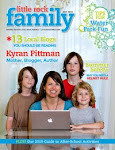As a former public library professional, I witnessed the slow transformation of a library space go from static to dynamic – a space where you walked in, checked out a book, and left – to a space with a teen center, a newly renovated children’s community room, and an adult multi-plex, community collaboratory.
But the equivalent transformation to public library websites,
where patrons or students can experience that same sense of interactivity with
either library staff or other patrons, was lacking when evaluating public libraries
on-line resources.
Under the parameters of the assignment, I spent about an
hour assessing three different public library websites – Liverpool Public Library, Liverpool NY (LPL), Central ArkansasLibrary System (CALS), and Fayetteville Public Library, Fayetteville, AR (FPL). All three libraries have a significant physical
collaborative spaces or learning commons: LPL, after a recent renovation, created
a Learning Lab, where adults, youth, and children, come to create and
collaborate on any number of projects offered by the LPL staff; CALS, a multi-branch
system, have collaborative spaces in many of the their branches, from full size
teaching kitchens, theaters, tool-repair areas, and entrepreneur-development; FPL
has a state-of-the-art Center for Innovation – a multi-million dollar space
that includes everything from a photography studio, a fabrication &
robotics lab, and video production studio. While all of these are “out of the
box” library spaces, all of them require in-person, on-site participation.
So how are these advanced, learning common opportunities reflected
virtually on the respective library’s websites? Quite frankly, they are all
limited and very similar: All are primarily information seeking options – website
links where patrons seek information – not interaction – like checking out
books, reserving a meeting space, or finding a database. One significant
virtual learning option all three libraries do share is their vast catalog of YouTube® videos. Since the pandemic, when all library services immediately shifted
off-line, libraries have quickly and efficiently turned many of their programs
into visual learning opportunities, making available normal in-person
programming, available to anyone with a computer link. The collective videos in
the libraries various channels include a millennium cooking show (seriously –
the best “how to make a grilled cheese sandwich” ever), advanced grant writing,
and concerts. However, the viewer is still the observer – there’s no
collaborative or “common” interactive opportunities to communicate. CALS did
sponsor a virtual learning common book club – where participants did have the
opportunity to read, discuss, and share as a virtual group, but aside from that,
virtual collaboration was limited or non-existent.
The websites I assessed are but three of thousands of
library websites. It would take me weeks or months to evaluate them all, but
based on this small sample, public libraries have a huge opportunity to create
websites that offer patrons a more robust catalog of virtual creating, learning,
and collaborative opportunities.




























No comments:
Post a Comment